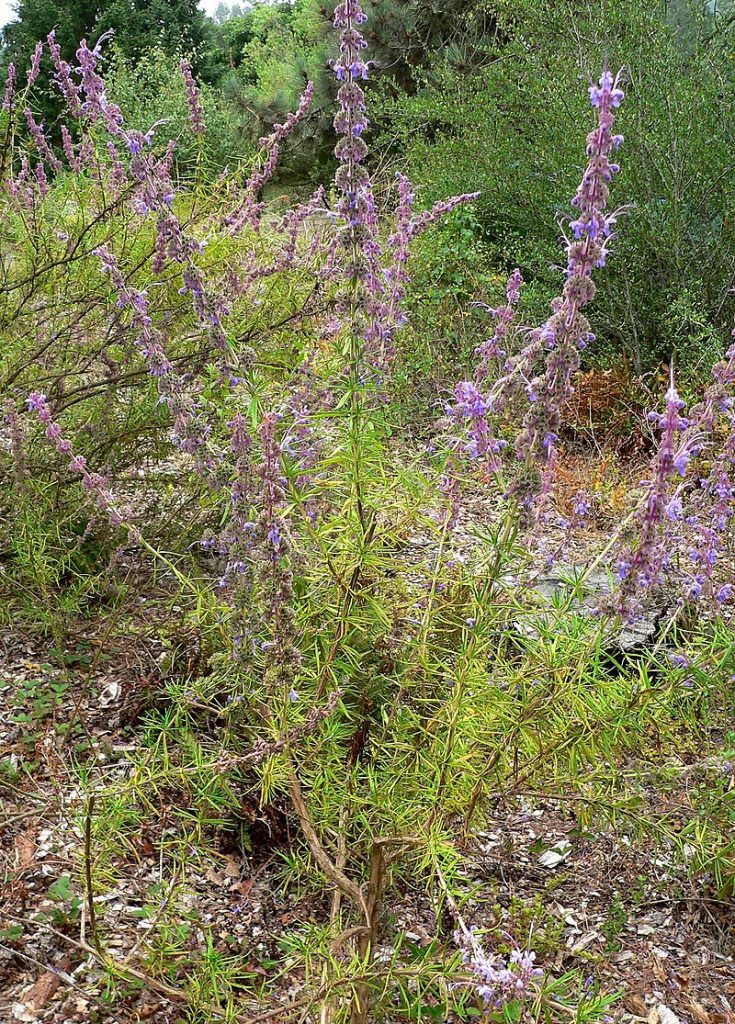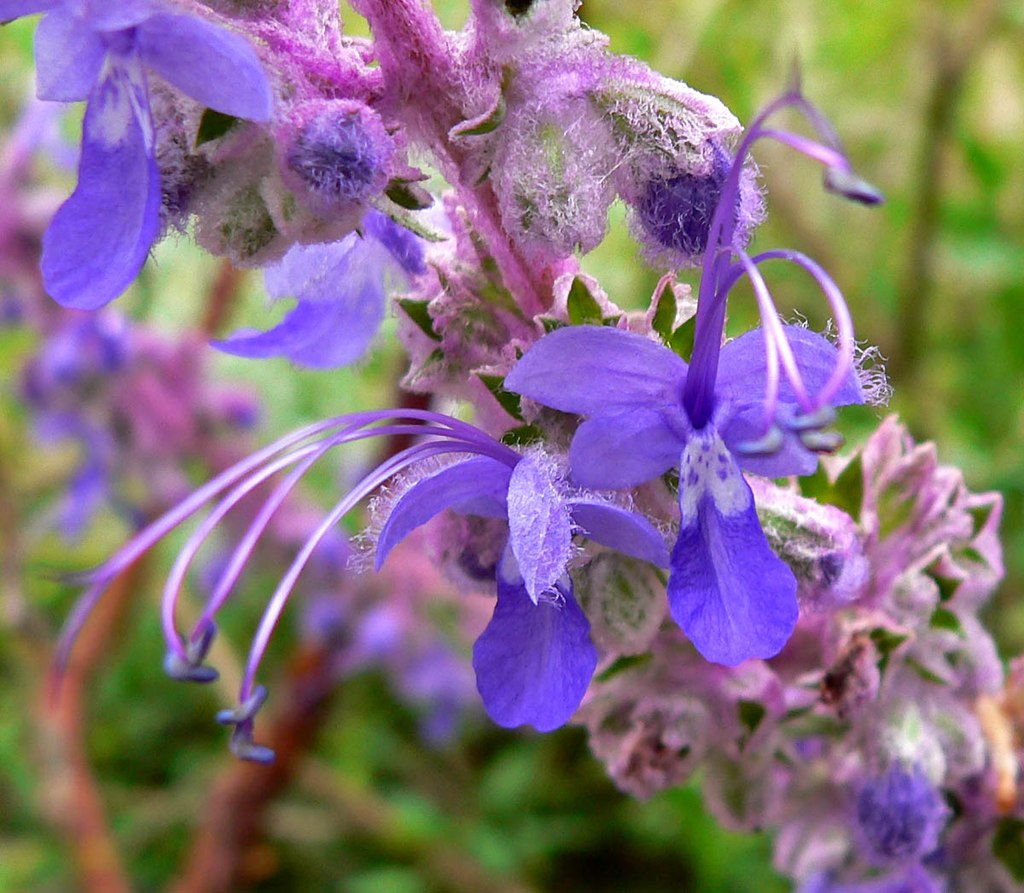
Native to dry slopes of south coast ranges of California and northern Baja, this evergreen shrub is a member of the deadnettle family, Lamiaceae, that also includes mint, rosemary, and beebalm. It grows up to 5′ tall, is well-branched and has narrow, pointed, rosemary-like leaves that are 2″ long and rolled under on the edge. The top sides are shiny green while the lower sides are woolly white. From late spring to summer, 12″ long dense spikes carry smooth-petaled blue flowers with long recurved stamens. The stems and calyces are covered in blue, pink, or white woolly hairs. The flowers attract hummingbirds, butterflies, and bees, including bumblebees, and are good in the vase. Woolly bluecurls is drought tolerant once established but must have excellent drainage and resents fertilizer. It tends to be short lived but has beautiful flowers and is a big asset in a xeriscape or desert garden. The Spanish explorers called this plant romero, meaning rosemary, and the name is still sometimes used. The genus name, Trichostema, is from the Greek word θρίξ (trix), meaning hair, and the Latin word stamen, meaning thread referring to the hair stamens. The specific epithet, lanata, comes from the Latin word lana meaning wool and refers to the woolly hairs on the plant. Photo Credit Stan Shebs Wikimedia Commons

Type: Evergreen shrub
Outstanding Feature: Flowers
Growth Rate: Rapid
Bloom: Dense spikes of smooth-petaled blue flowers with long recurved stamens and stems and calyces covered in blue, pink, or white woolly hairs, in late spring to summer
Form: Vase-shape
Size: 3-5′ H x 3-10′ W
Light: Part shade to full sun
Soil: Lean to average, dry, very well-drained; water regularly the first year to get established then water 1/month in summer
Hardiness: Zones 8-10
Care: Prune early to prevent legginess; deadhead to extend bloom time.
Pests and Diseases: None of significance
Propagation: Stem cuttings, seed (difficult)
Outstanding Selections:
Photo Credit: Stan Shebs Wikimedia Commons